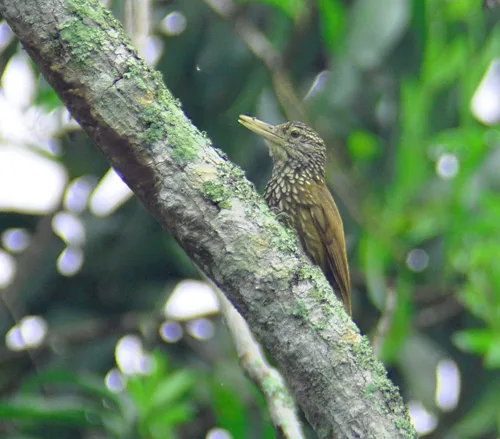
Straight-billed Woodcreeper
[order] PASSERIFORMES | [family] Furnariidae | [latin] Xiphorhynchus picus | [UK] Straight-billed Woodcreeper | [FR] Picucule a bec droit | [DE] Geradschnabel-Baumsteiger | [ES] Trepatroncos Piquirrecto | [NL] Priemsnavelmuisspecht
Subspecies
| Genus | Species | subspecies | Breeding Range | Breeding Range 2 | Non Breeding Range |
| Dendroplex | picus | LA | Panama to e Brazil | ||
| Dendroplex | picus | altirostris | |||
| Dendroplex | picus | bahiae | |||
| Dendroplex | picus | borreroi | |||
| Dendroplex | picus | choicus | |||
| Dendroplex | picus | deltanus | |||
| Dendroplex | picus | dugandi | |||
| Dendroplex | picus | duidae | |||
| Dendroplex | picus | extimus | |||
| Dendroplex | picus | longirostris | |||
| Dendroplex | picus | paraguanae | |||
| Dendroplex | picus | peruvianus | |||
| Dendroplex | picus | phalarus | |||
| Dendroplex | picus | picirostris | |||
| Dendroplex | picus | picus | |||
| Dendroplex | picus | rufescens | |||
| Dendroplex | picus | saturatior |
Physical charateristics
Crown dusky brown with white spots, contrasting with the rufous chestnut back. White spots often extend to the upper mantle. Throat and upper breast buffy white. rest of underparts reddish. Breast streaked with broad white, black-bordered stripes. Wings and tail rufous. Bill very straight, upper mandidble dusky horn, lower mandible flesh colored. Sexes are ailke.
Listen to the sound of Straight-billed Woodcreeper
[audio:http://www.aviflevoland.nl/sounddb/S/Straight-billed Woodcreeper.mp3]
Copyright remark: Most sounds derived from xeno-canto
| wingspan min.: | 0 | cm | wingspan max.: | 0 | cm |
| size min.: | 18 | cm | size max.: | 22 | cm |
| incubation min.: | 0 | days | incubation max.: | 0 | days |
| fledging min.: | 0 | days | fledging max.: | 0 | days |
| broods: | 0 | eggs min.: | 2 | ||
| eggs max.: | 3 |
Range
Latin America : Panama to East Brazil
Habitat
Its natural habitats are subtropical or tropical dry forests, subtropical or tropical moist lowland forests, subtropical or tropical mangrove forests, and heavily degraded former forest. It is rarely found inside the forest but prefers forest edges, varzea forest, light and secondary woodland and mangrove swamps.
Reproduction
Nest in natural cavity, old woodpeckers nest, or other suitable gap in tree or termite nest. Floor of nest chamber unlined or sometimes lined with soft tree or plant material . Built 1-9 meter above ground. Clutch size is 2-3 eggs, incubated by both parents.
Feeding habits
Mainly anthropods like beetles and ants, sometimes vertebrates like small lizards and frogs. It lives alone or in pairs, often following mixed-species flocks of insectivorous birds. It clinges up trunks to search for insects and other small invertebrates.
Conservation
This species has an extremely large range, and hence does not approach the thresholds for Vulnerable under the range size criterion (Extent of Occurrence <20,000 km2 combined with a declining or fluctuating range size, habitat extent/quality, or population size and a small number of locations or severe fragmentation). The population trend appears to be increasing, and hence the species does not approach the thresholds for Vulnerable under the population trend criterion (>30% decline over ten years or three generations). The population size has not been quantified, but it is not believed to approach the thresholds for Vulnerable under the population size criterion (<10,000 mature individuals with a continuing decline estimated to be >10% in ten years or three generations, or with a specified population structure). For these reasons the species is evaluated as Least Concern.

Migration
Sedentary throughout range.
Distribution map

